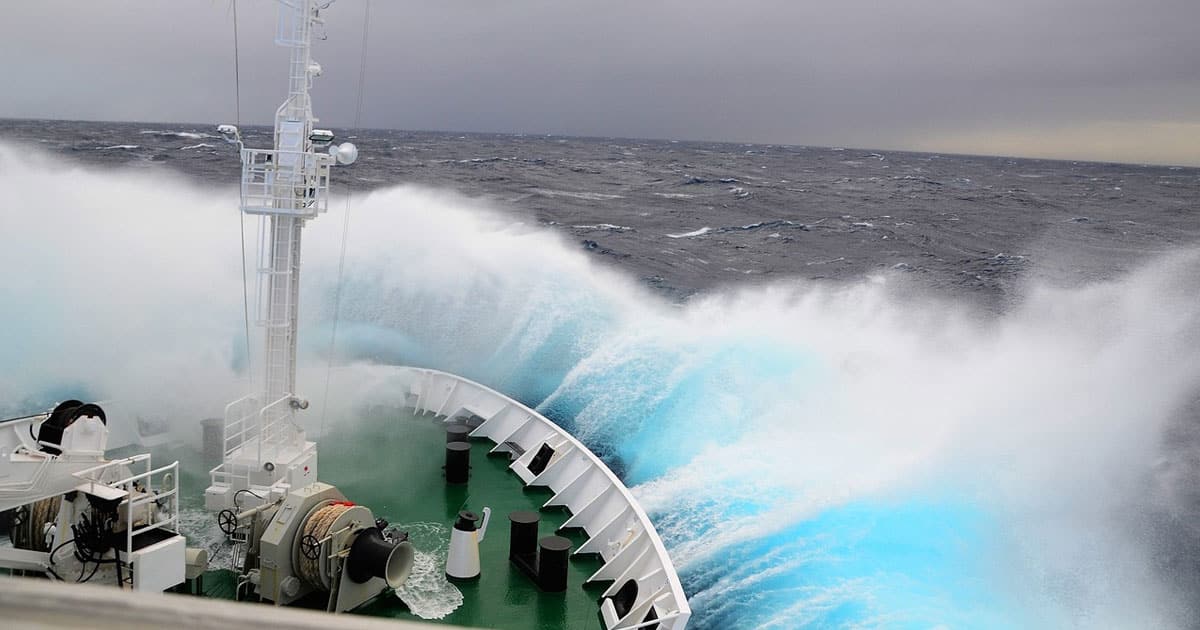Our planet is 71% water, and the ocean can be intimidating to think about what else there is that we have not yet discovered. It is one of the factors that makes our planet truly fascinating.
You may have heard of the phrase ‘Seven Seas’. The phrase dates back a long time ago upon each sea’s discovery. In the modern day, the Seven Seas represent the Arctic, North Atlantic, South Atlantic, North Pacific, South Pacific, Indian, and Southern Oceans.
Amongst these seas, as magnificent as they are, some of them are infiltrated with dangers and challenges. From high waves to rough weather, sailors must be especially vigilant and prepared for the conditions ahead.
Here are some of the roughest seas on Earth:

The Drake Passage
In the Atlantic and Pacific oceans locates the Drake Passage, a passage that bridges Antarctica and the rest of the world. This waterway makes the list because of its absurdly deep water of around 4,800 meters deep and rough sailing conditions. Voyagers will experience extreme turbulence on the water, making it difficult for them to cross. To elaborate, it can take up to 3 days to cross the waterway. Travelers will find nothing but cold-freezing water surrounding them and no land for hundreds of miles.
The Gulf of Alaska
Located in the north of the Pacific Ocean, the Gulf of Alaska stretches from the Alaska Peninsula and Kodiak Island. Some parts of the gulf have calm waters but some amongst the Anchorage or Seward bits of Alaska are quite tough to cross. With glacial Arctic weather and turbulent storms, they make it extremely difficult for voyagers to handle.
The Bay of Biscay
The Bay of Biscay is situated within the south of the Celtic Sea, between the borders of France and Spain. It is known for its dominant winds and massive waves that terrify those who come across these waters. Avoid the Bay of Biscay in wintertime, as there will be epic storms waiting.
The Caribbean
The Caribbean Sea is a part of the Atlantic Ocean that stretches over 1,060,000 sq.mi. When hurricane season comes, the Caribbean faces harsh weather conditions such as tropical storms and huge waves. Not to mention a treacherous spot where the body of water of the Atlantic Ocean and the Caribbean Sea meet, making it a dangerous point for cruise ships to cross.
The South China Sea
The South China Sea lies within the northwest Pacific Ocean by the shores of southern China. The sea possesses rough weather conditions such as typhoon or tropical storms during the months of August to September. These conditions can occur at any time of year but get especially worse during the storm season. There are many incidents amongst sailors and cruisers due to the harshness of the sea.
Regardless of the harsh conditions of these seas, in the months where the storms are gone and the sky is clear, these waters still stay magnificent and leave travelers wonderstruck by how powerful nature is. If you are cruising around these seas, make sure you understand the sea conditions. Whether they are the turbulence that may cause sea sickness or how strong the wind and currents will be, it is essential to be mindful of rough journeys ahead.
